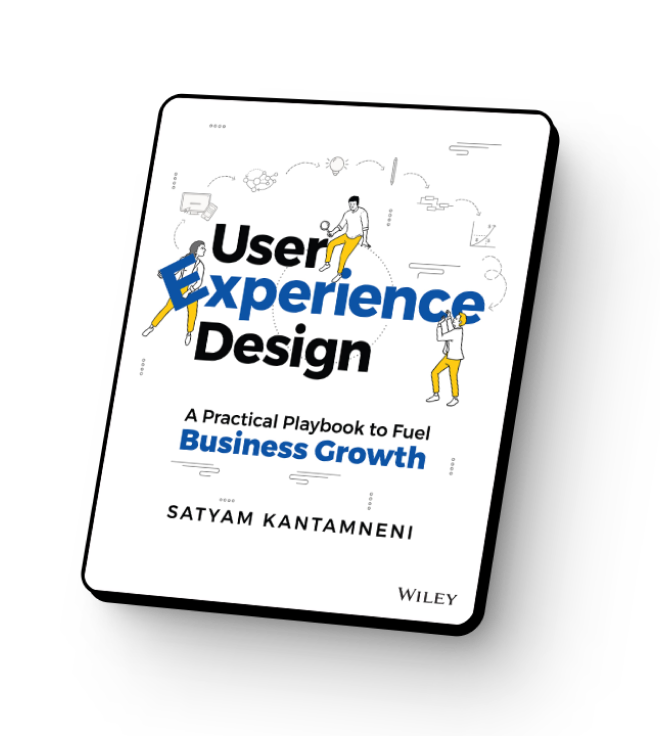Imagine this: your UX team is weeks behind schedule, stuck revisiting the same designs over and over, trying to incorporate feedback. Meanwhile, the clock is ticking, budgets are stretching thin, and your end users are still waiting for a product that solves their problems.
This isn’t just a UX team issue—it’s a leadership challenge.
Across countless organizations building complex enterprise products, one frustration rings loud and clear: feedback loops that spiral out of control.
Here’s what I often hear UX teams say stakeholders tell them:
❌ “It doesn’t look good.”
❌ “It doesn’t work.”
❌ “It’s too hard to develop; simplify it.”
The result? UX teams iterate endlessly, feedback loops expand, and valuable time and resources are wasted. This cycle doesn’t just frustrate teams—it derails timelines, inflates costs, and risks delivering products that fail to meet user needs.
Why Feedback Loops Are a Leadership Challenge
When internal feedback takes priority over user insights, organizations inadvertently steer away from their primary goal: delivering value to the end user. This misalignment creates significant risks:
- Low adoption rates: Products fail to address real user problems, leading to poor ROI.
- Operational inefficiencies: Teams waste time iterating on features that don’t deliver value.
- Strategic missteps: Missed opportunities to differentiate or innovate in the market.
As a leader, you set the tone. You can break this cycle by fostering a culture prioritizing user-centricity and strategic alignment.
5 Ways Leaders Can Break Free From the Feedback Trap
1. Build a Culture of “Why”
Encourage your UX teams to dig deeper when stakeholders provide vague feedback like, “This doesn’t work.” Asking “Why?” refocuses discussions on meaningful outcomes, such as user impact and business alignment.
Leadership Takeaway: A culture of curiosity minimizes subjective debates and shifts the focus to outcomes that matter, enabling faster alignment and smarter iterations.
2. Make User Validation a Strategic Mandate
Embed user insights into the product lifecycle by validating designs early and often. This ensures that potential problems are uncovered before they become expensive post-launch challenges.
Leadership Takeaway: Prioritizing user validation saves time, reduces rework, and builds team confidence.
3. Structure Internal Feedback Sessions for Success
Establish clear goals and frameworks for feedback sessions to avoid unproductive debates. This keeps discussions focused on driving alignment and progress.
Leadership Takeaway: Structured sessions ensure feedback drives progress instead of creating noise or delays.
4. Lead With Data, Not Opinions
As a leader, you set the tone for decision-making. Insist on evidence-backed discussions that leverage user research, analytics, and usability testing. Replace “I think” with “The data shows.”
Leadership Takeaway: Data-driven decision-making builds trust, minimizes subjective debates, and accelerates progress.
5. Celebrate Wins and Learn From Missteps
Foster a culture of continuous improvement by recognizing user-driven successes and reflecting on areas for growth.
Leadership Takeaway: Recognizing wins boosts morale while reflecting on missteps reinforces the importance of aligning around user needs.
From Our Experience
We redesigned a core product for a billion-dollar enterprise to improve engagement and efficiency. During the first design sprint, stakeholders from the product, engineering, and business teams dominated the process, driven by an aggressive product release deadline. They provided conflicting feedback, such as:
- “This looks cluttered.”
- “Simplify this feature—it’s too complex to build.”
- “Why did we even start with this?”
As a result, the team spent weeks revising designs without clear direction or alignment. While the product launched on time, it required far more time and effort than usual, leaving the team frustrated and overworked.
Afterward, we conducted a post-mortem to identify areas for improvement. We proposed a business case for change, and while some stakeholders resisted, our sponsor signed off to experiment with a new approach. By onboarding all stakeholders and applying the above strategies, we achieved significant results and this is how it worked:
- Why Framework: Teams began asking stakeholders to clarify the intent behind their feedback, linking every feedback to user or business outcomes. In a few meetings, Stakeholders started arriving prepared for meetings, often with clear rationales.
- User Validation: Early usability tests uncovered several user needs and goals that were not captured in the initial requirements.
- Structured Feedback: Stakeholders provided feedback during reviews based on the UX process stage—for instance, functionality feedback was reserved for wireframe reviews, while workflow reviews focused on users, business goals, and the overall consolidated flow in the product.
- Data-Driven Insights: To support their rationales and decisions, stakeholders used data points from customer success teams, user observations, and surveys.
When a small module of the redesigned product was launched, it quickly became evident that it required far less time, effort, and iterations compared to previous cycles while also being well-received by users. The leadership team publicly recognized the alignment efforts that contributed to this success.
This approach saved weeks of iteration and delivered a product that met user needs and business goals.
Why This Matters
Breaking the endless feedback loop isn’t just about fixing processes—it’s about safeguarding your organization’s ability to innovate and grow. For leaders like CPOs, CIOs, CTOs, and Founders, fostering a culture of user-centric collaboration unlocks:
- Higher adoption rates: Products that resonate with users drive growth.
- Faster time-to-market: Reducing feedback cycles saves valuable resources.
- Competitive differentiation: Aligning user insights with strategy fuels innovation.
By leading with a focus on outcomes, you empower your teams to deliver solutions that resonate with users and create lasting business impact.
Transform in 2025
As we close out 2024, it’s time to reflect and act. Here’s your leadership challenge:
- Audit your feedback process: Are internal reviews structured, focused, and aligned with user needs?
- Set a user-validation benchmark: Commit to engaging real users early and consistently.
- Celebrate progress: Recognize wins to reinforce a user-driven culture in 2025.
Breaking the feedback loop isn’t just about improving processes—it’s about transforming how your organization aligns strategy, teams, and products to deliver impact.
Schedule a call, contact us to learn more. We are happy to talk.

